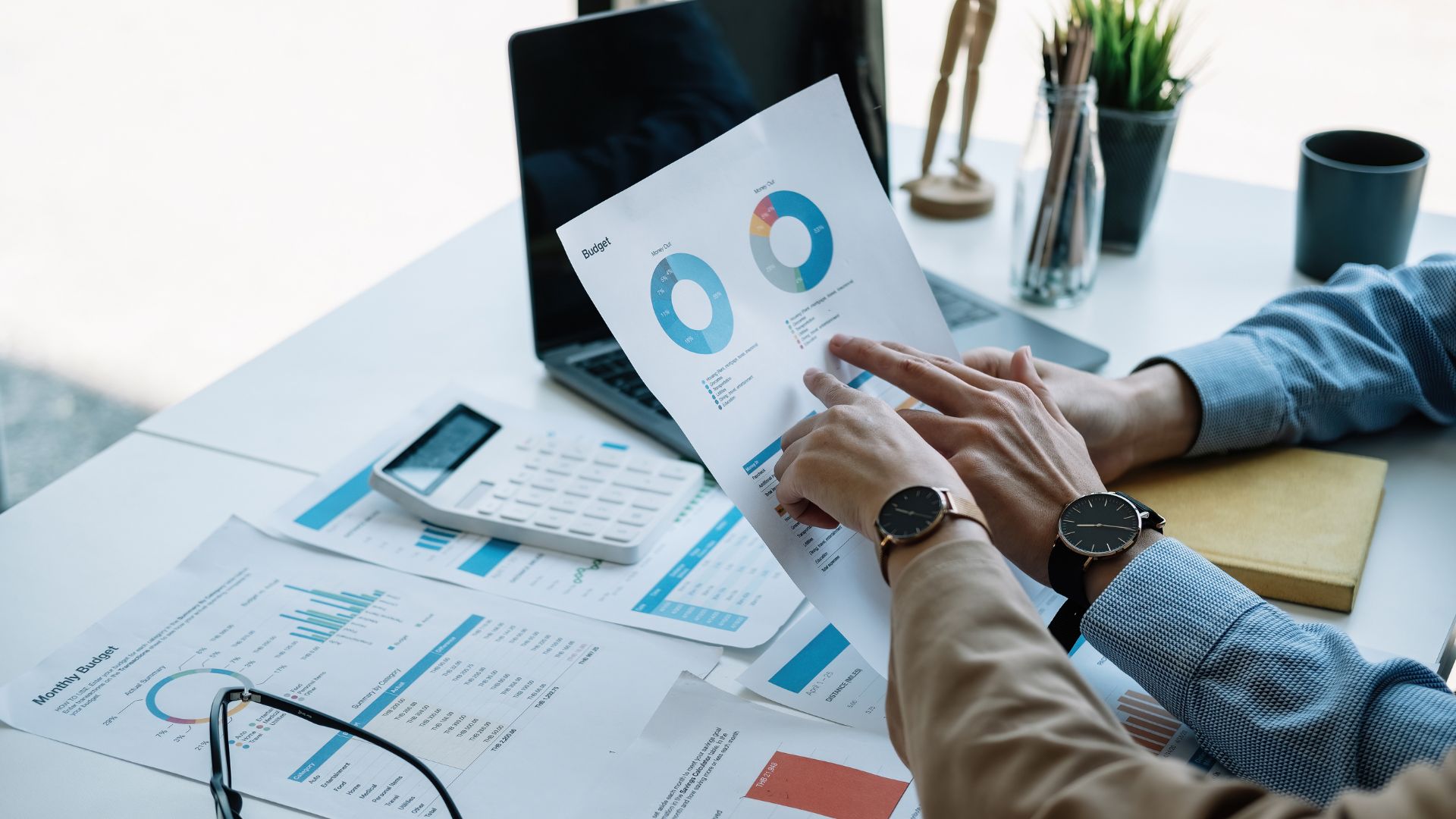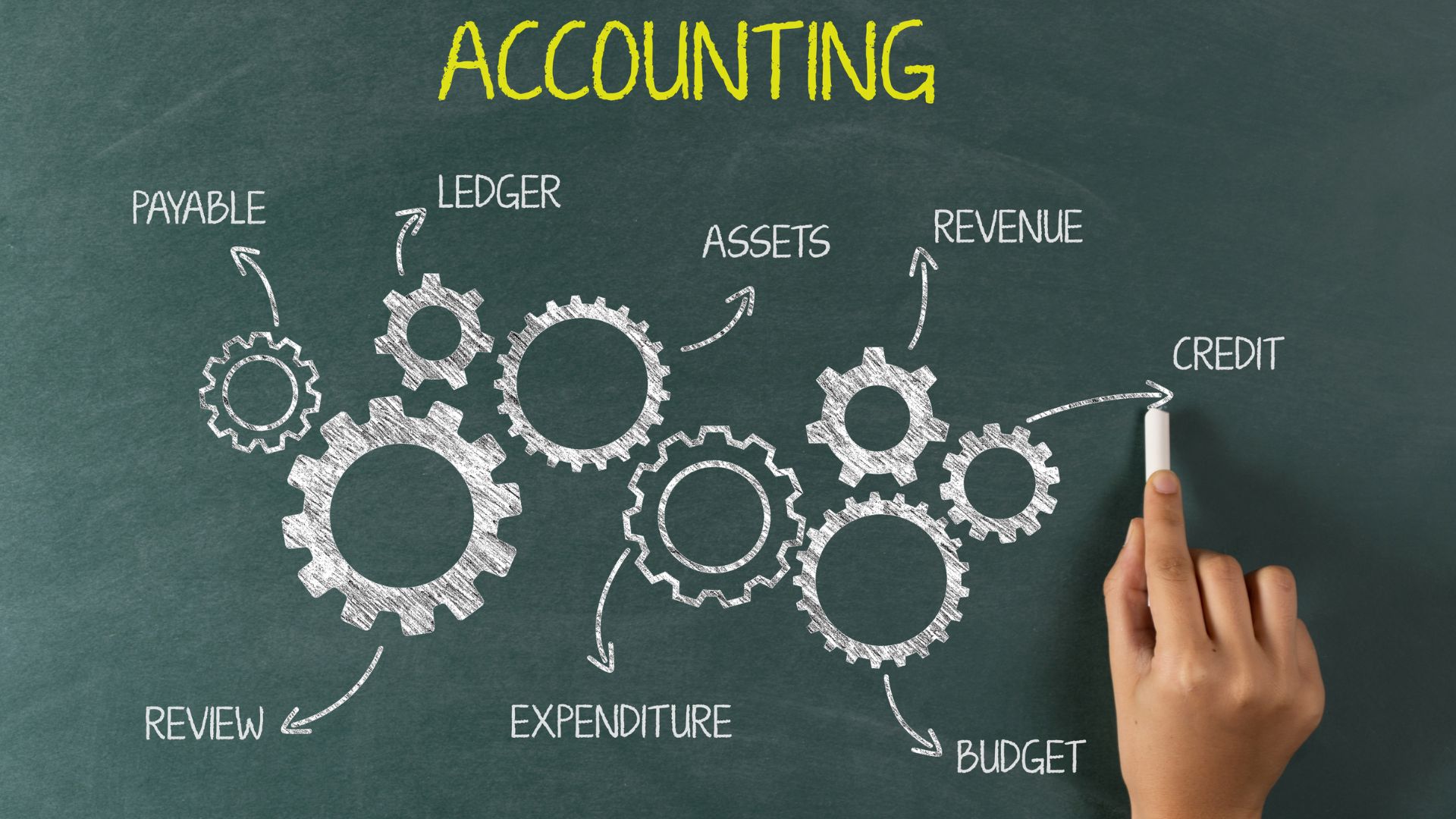In the context of increasingly fierce competition, cost management accounting in business plays a key role in supporting managers to make accurate and timely decisions. Not only does it help control cash flow effectively, this tool also provides a comprehensive view of operational efficiency, thereby optimizing costs, improving profits and increasing competitiveness.
The following article will help you understand the concept, role, and common methods in cost management accounting, and analyze the factors that affect the implementation process in businesses.
1. Overview of Cost Management Accounting
Cost management accounting in a business is not only a tool for tracking and analyzing expenses, but also a core factor that helps managers make strategic decisions and effectively control operational performance. Through measuring, analyzing and providing detailed information on costs, this department supports businesses to optimize resources, improve performance and maintain long-term competitive advantages.
1.1. Concept of Cost Management Accounting
Cost management accounting is the process of collecting, processing and analyzing information about production cost – business to serve the purpose of internal management of the enterprise. Including both fixed and variable costs, cost accounting provides a comprehensive picture of the use of resources in the organization. It is essentially a quantitative analysis tool, helping to determine the actual costs for each product, project or department, thereby supporting more effective decision making.
1.2. Objectives of Cost Management Accounting
- Accurately determine the total costs required to operate the business.
- Provide data to analyze pricing strategies, evaluate the effectiveness of each product line and service.
- Support managers in making decisions to adjust production models, business plans and allocate resources appropriately.
- Helps businesses maintain competitive position through cost control and market differentiation.
1.3. The role of cost management accounting in business
Cost management accounting in business plays a central role in shaping development strategies and managing financial performance. Prominent roles include:
- Understand cost structure to control budget: Information from cost accounting helps businesses identify unreasonable expenses, thereby restructuring and using resources more effectively.
- Support flexible executive decision making: Analyzing each type of cost allows leaders to quickly evaluate the effectiveness of production and business activities and adjust plans to optimize profits.
- Associated with key management functions:
- Planning: Estimate costs, establish production and operating budgets.
- Implementing organization: Track actual costs incurred and provide early warning if budget is exceeded.
- Monitoring and inspection: Compare actual and planned costs to evaluate operating efficiency.
- Evaluation and decision making: Analyze data to develop strategic solutions or adjust operating procedures.
- Risk Management: Identify and control risk factors affecting production costs and business efficiency.
Implementing cost management accounting in a systematic manner helps businesses not only control expenses well but also improve their ability to adapt to market fluctuations.
2. Types of costs in Management Accounting
In cost management accounting in business, the identification and classification of costs accurately plays an essential role in planning, controlling and making financial decisions. Each type of cost has its own characteristics and directly affects the operational efficiency as well as the final profit of the business. Below are the common classification methods today:
2.1. General definition of cost
Costs are the monetary expression of resources consumed to achieve production or business goals. For example: office rental costs, production material costs, employee salaries, outsourcing service costs, taxes and fees, entertainment costs, travel costs, etc.
2.2. Cost classification by operational function
Classifying costs by operational function helps businesses clearly identify the role of each type of cost in the operating chain, from production to consumption and management. This classification supports the budget planning process, analyzes the efficiency of each department and makes decisions to optimize resources.
- Production cost: Includes direct and indirect costs serving the product creation process such as:
- Direct material cost: Main materials that make up the product.
- Direct labor costs: Salaries of workers directly involved in production.
- General manufacturing costs: Electricity, water, machinery maintenance, fixed asset depreciation.
- Non-manufacturing costs: Arising in the consumption and management stages:
- Cost of sales: Shipping, marketing, promotion, packaging.
- Business management costs: Office supplies, administrative department salaries, office rental costs.
2.3. Cost classification by behavior
Classifying costs by behavior helps managers analyze the flexibility of costs when production or operation scale changes. From there, businesses can build financial plans and control costs more effectively in each stage of operation.
- The variable costs: Increase or decrease according to the volume of activity (e.g. input materials).
- Fixed costs: Does not change in the short run despite changes in output (e.g. depreciation of assets).
- Mixed costs: Combines both fixed and variable elements (e.g., utility bills have both a base rate and a variable rate based on usage).

2.4. Classification of costs according to their relationship with profit
Classifying costs according to their relationship with profits helps businesses determine when and how to record costs in financial statements. This is an important basis for correctly assessing business results in each accounting period.
- Product cost: Associated with the production process, recorded in inventory and transferred upon sale.
- Period cost: Incurred during an accounting period and not tied to a product (e.g. advertising, administrative costs).
2.5. Cost classification by cost object
Classifying costs by cost object helps businesses accurately determine the expenses incurred for each specific department, product or project. This is very important in calculating costs, controlling costs and making reasonable pricing decisions.
- Direct costs: Attached to a specific and precisely calculable object (such as a product or part).
- Indirect costs: Cannot allocate directly, need to allocate according to appropriate criteria.
2.6. Other classification methods
In addition to the common classification methods, businesses can also analyze costs from specific perspectives to serve decision-making purposes. These methods are often applied in the process of strategic planning, choosing business solutions, or evaluating the effectiveness of internal controls.
- Controllable/uncontrollable costs: Based on the manager's ability to adjust.
- Cost difference: Differences between decision making options.
- Opportunity cost: The benefit foregone when choosing one option over another.
- Sunk costs: Has occurred in the past and does not affect the present decision.
3. Popular cost management accounting methods today
In the field of cost management accounting in enterprises, there are many methods applied depending on the management objectives, business model and production characteristics. Below are 4 popular methods to help enterprises improve cost efficiency and control finances more closely.
3.1. Target Costing Management Accounting Method
This method is used in the planning and design phase of new products, helping businesses determine target costs based on estimated selling prices and expected profit margins. The formula is as follows:
Target Cost = Estimated Selling Price – Expected Profit
This is a strategic tool to help businesses cost control right from the beginning of product ideation, especially effective in industries such as automotive manufacturing, electronics, new product design.
Benefit: Reduce costs before production, optimize product cycles, increase profitability based on market analysis.
3.2. Kaizen Costing Management Accounting Method
Kaizen Costing focuses on continuous improvement to reduce costs through each stage of production. Instead of relying on fixed standards, this method uses the most recent actual cost as the basis for improvement.
Benefit: Increase productivity, reduce material loss, promote internal innovation and improvement, optimize production and operating budgets.
3.3. Standard Costing Management Accounting Method
This is a method of establishing ideal cost norms and actual costs, thereby measuring and effectively controlling costs in businesses with stable production processes.
Benefit: Helps simplify accounting systems, provides data for control and comparison, and motivates production staff to save costs.
3.4. Activity-Based Costing (ABC) method
The ABC method allocates costs based on the activities performed to create a product. Costs are grouped by activity centers and allocated according to various volume or non-volume related criteria.
Benefit: Accurately determine product costs, evaluate performance by customer, market segment, product type; suitable for businesses with many product lines and complex processes.

4. Factors affecting cost management accounting in enterprises
The effective implementation of cost management accounting in an enterprise depends not only on internal resources but also on the strong impact of the external economic, legal and technological environment. Below are the main groups of influencing factors that enterprises need to identify in order to build a suitable, flexible and effective cost management accounting system:
4.1. Factors external to the business
External factors strongly influence the way cost management accounting systems are organized and operated in enterprises. Changes in the legal and economic environment and global accounting trends force enterprises to adapt flexibly to maintain management efficiency.
- International integration in accounting: It has led to fundamental changes in the economic management mechanism and created opportunities to access modern accounting methods and techniques in the world, especially for management accounting.
- State and industry policies and laws: A reasonable system of policies and laws (especially on accounting, finance and tax) will facilitate the application of cost management accounting; otherwise it will hinder it.

4.2. Internal factors of the enterprise
In addition to external factors, the internal strength of the enterprise plays a key role in determining the level of effective implementation of cost management accounting. Factors such as organizational structure, human resources, operating policies and technological infrastructure will directly affect the collection, processing and use of cost information in the decision-making process.
- Business size: The larger the enterprise, the more necessary it is to apply cost management accounting and the more complex the work to apply it.
- Awareness and training level, capacity of the administrator: When managers have a correct understanding of the importance of cost management accounting and good management capacity, they will direct its application to collect accurate, reliable, and timely information to make business decisions.
- Business policies of the enterprise: Including sales policy, discount, supplier selection criteria, financial policy (credit, debt) have a great influence on the ability to form a cost estimation system.
- Level of decentralization and delegation of authority in the enterprise: The clearer the decentralization and delegation of authority, the more favorable conditions will be created for businesses to proactively and effectively implement cost management accounting.
- Training level and professional competence of the accounting staff: Well-trained and professionally competent accounting staff will facilitate the application of cost management accounting.
- Coordination between functional departments in the enterprise: Close coordination between departments will create overall efficiency in performing common tasks, especially with the finance and accounting departments to synthesize costs.
- Enterprise information technology infrastructure: The higher the level of information technology application, the more convenient the application of cost management accounting, helping to collect and process information quickly and accurately.
5. Limitations and notes when building cost management accounting in enterprises
The implementation of cost management accounting in enterprises today still faces many challenges due to lack of proper investment and lack of integration with strategic management activities. Below are common limitations and important notes when building an effective model:
5.1. Current limitations of Cost Management Accounting
Many businesses still underestimate the role of cost management accounting in operations and decision making. The application of this accounting model is often only formal, lacking depth and not closely linked to business practice. Some notable limitations include:
- Cost management accounting has not received due attention from businesses, its importance has not been emphasized, leading to ineffective business management strategies.
- The application is currently only at a rudimentary level, not yet truly deployed and deeply integrated into the business operations of the enterprise.
- Most businesses have only organized financial accounting systems and have not fully invested in cost management accounting systems.
- Traditional cost management systems typically focus on allocating direct costs and manufacturing overhead costs to control and cut costs, but has the limitation of only paying attention to internal factors without considering external factors such as competition, customer requirements, which can affect product quality and be passive in cost management.
5.2. Notes when building a cost management accounting model
To make appropriate decisions and plan a wise long-term business strategy, the cost management accounting model needs to reflect accurate and optimal information. The following factors need to be considered:
- Ensure generality: The model needs to fully reflect the basic contents related to the role of cost management (the ability to identify and control production and business costs), while providing honest, reasonable and timely information.
- Keeping it simple: The capacity and professional level of the staff and business administrators play an important role. The production and business processes of the enterprise need to be optimized and streamlined to limit the complexity of the model.
- Respond to administrator information requests: The information provided must be complete (from summary to detail), suitable for the needs of the business in the entire business process (planning, implementation, management, inspection, evaluation).

6. Application of technology in Cost Management Accounting: Bizzi Solution
In the context of increasingly complex business costs, applying technology to cost management accounting in businesses is no longer a trend but has become an essential need. Bizzi - a digital platform for financial and accounting processes - provides a comprehensive automation solution, helping businesses control costs more effectively, minimize errors and improve productivity.
6.1. Introducing Bizzi Solution
Bizzi is a platform that integrates AI and RPA technology to help businesses streamline their cost management accounting processes. Designed as a virtual financial assistant, Bizzi helps automate revenue and expenditure processes, control budgets, track invoices and debts, thereby increasing transparency and accuracy in financial management.
6.2. Outstanding features of Bizzi support cost management
- Processing, reconciling and managing input invoices (IPA + 3way): Automatically upload, check and reconcile invoices with purchase orders (POs) and goods receipts (GRs) in real time. The system also checks supplier information and alerts you of risks if irregularities are detected.
- Business Expense Management (Bizzi Expense): Businesses can set budgets by department or project, monitor and warn when there are signs of exceeding limits. Spending requests are quickly approved through the automated system, ensuring transparency and compliance with internal policies.
- Business Travel Management (Bizzi Travel): Support automatic flight booking based on budget, track all business expenses from travel, accommodation to meals. The system helps create overview reports and strictly control business expenses.
- Electronic invoice management (B-invoice): Allows creation and issuance of standard electronic invoices, directly connected to the tax system for authentication. Invoices are securely stored for at least 10 years and easily retrieved when needed.
- Accounts Receivable Management (ARM): Automatically remind customers of debts via email, text messages and track debt status in real time. The system supports businesses in effectively reconciling debts and reducing financial risks due to bad debts.

Businesses register for trial at: https://bizzi.vn/dang-ky-dung-thu/
7. Conclusion
Cost management accounting in business It is not only a simple accounting tool but also a strategic foundation to help businesses improve operational efficiency and sustainable development. Applying the right method and understanding the influencing factors will help managers make quick, accurate decisions that are consistent with long-term financial goals. To optimize cost management efficiency, businesses should consider using technology solutions such as Bizzi - software that supports the automation of modern accounting processes, saving time and operating costs.
To improve the efficiency of invoice management as well as automate the financial and accounting processes of the business. Register to experience Bizzi's comprehensive solution suite today!
- Link to register for a trial of Bizzi products: https://bizzi.vn/dang-ky-dung-thu/
- Schedule a demo: https://bizzi.vn/dat-lich-demo/


